Driving on the Isle of Skye can be a stressful experience if you’re not used to Highland roads or driving on the left. But it doesn’t have to be!
With a bit of knowledge, you can reduce your stress levels and feel more confident about getting around the island.
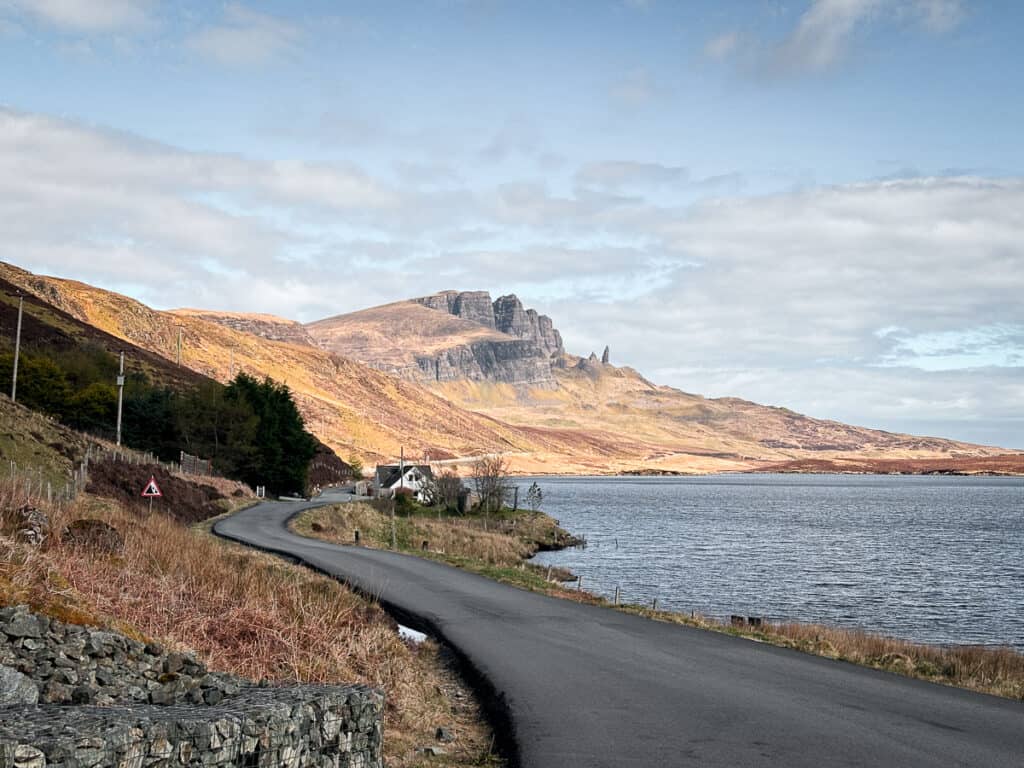
When we moved to Skye in October, the roads were relatively quiet, but people kept warning us how crazy things would get during the season from around May to September.
And they weren’t wrong!
It was seriously like a switch flipped, and we haven’t been able to leave our house to drive anywhere without witnessing some kind of incident!
I don’t want to just be down on visitors driving here because I’m sure no one wants to be a bad driver, and I’m sure many of the things we see and deal with are due to a lack of education.
So, I thought I’d write out some tips for driving on Skye.
1. Know the speed limits and signs
The speed limit, unless otherwise stated, is generally 60mph on the open road and either 20mph or 30mph in villages/towns, so keep an eye out for those changes.
Round signs designate speed limits. You will also not see a sign to speed up again after slowing down in a built-up area, but a round white sign with a black diagonal line, which means it goes back up to the maximum for that type of road (generally 60mph on a single carriageway or single track).
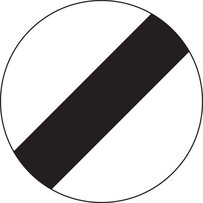
There are some confusing rectangle signs on the main road where it drops to 40 for heavy vehicles over 7.5 tonnes that people often slow down for when they don’t need to.
Apparently, this sign is pretty rare, but it occurs a few times in Skye! Watch out for it on the road between Broadford and Portree.

Another sign you’ll see a few times on the main road between the bridge and Portree is for giving way on a narrow stretch of road/bridge. It generally has arrows to indicate which lane should give way to the other. Please keep an eye out for it and wait for traffic to go through before you go ahead.
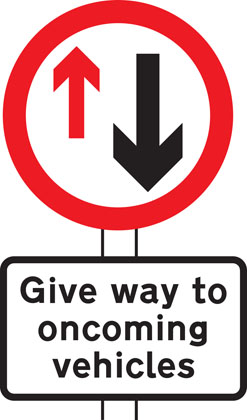
Those of us living here would consider the major roads (two lanes, one for each direction of traffic) to be pretty simple to drive and mostly at 60mph. However, I know visitors unfamiliar with the roads sometimes feel unable to reach this amount.
While it’s not a target, and you do need to drive at the speed you feel safe at, it’s also important to be aware of other traffic on the road and those who feel comfortable driving up to that level. We often get stuck behind people driving 40mph or even less.
Which brings me to…
2. Pull over SAFELY if you are slowing down traffic
One week, I had two drivers just stop right in the middle of the road to allow me to pass when there was traffic coming the other way, so it wasn’t actually helpful, but dangerous instead.
If you have a line of cars behind you or know you’re travelling much slower, look for a safe space to pull off the road so traffic can pass. This would generally be a layby or a place of interest.
If you’re on a single-track road, you can also pull over in a passing place to allow cars to pass; just indicate to the left or put your hazards on, and they’ll understand and pass you. Let them know as early as possible so they don’t pull in behind you!
Which brings me to…
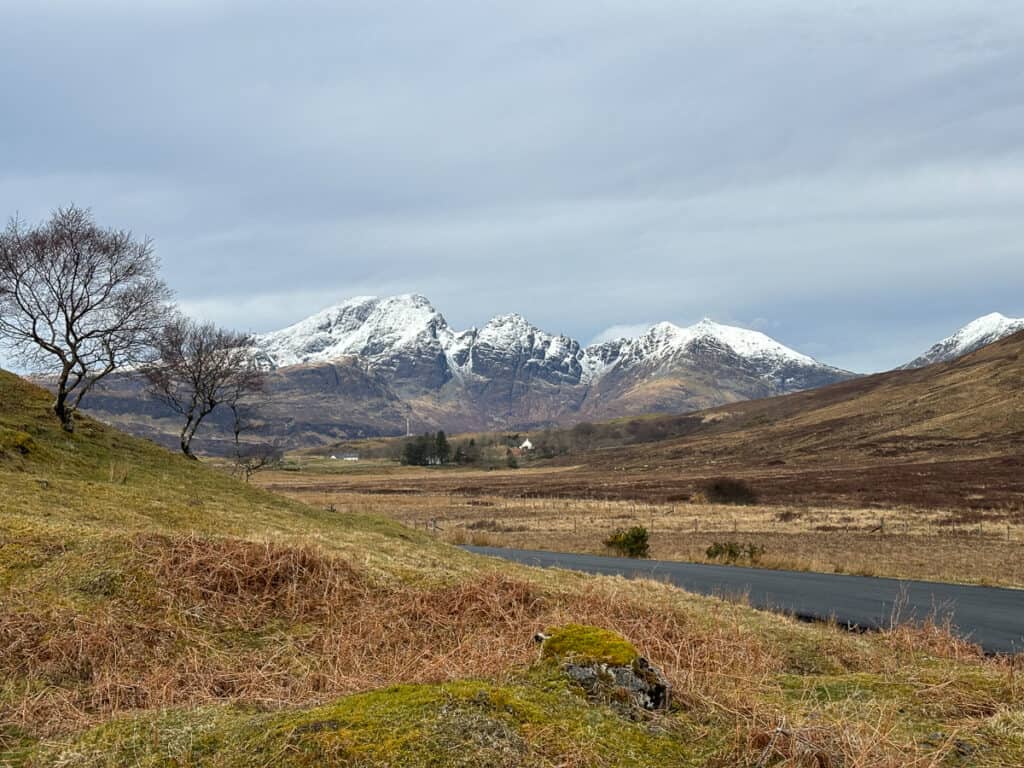
3. Know how to navigate single-track roads
Single-track roads have only one lane for both directions of traffic, but they have various passing places on each side of the road to allow cars to flow around each other before continuing on.
There are a few rules you definitely need to know to navigate these roads safely and in a way that works for all road users.
Firstly, the keep left rule still applies to single-track roads. You do not cross the road to pull into a space but stay on the left side next to the space so the other car always passes on your right, even if they have to dip into the passing place to do so.
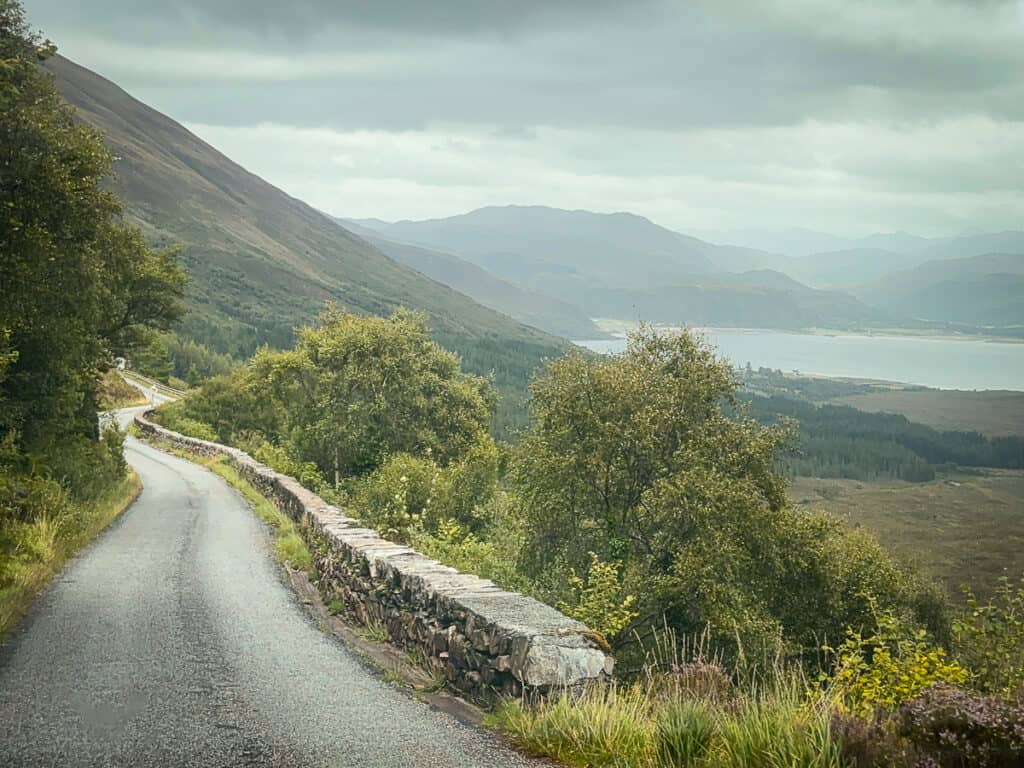
The exception is pulling across into a space for a large vehicle like a lorry or construction vehicle so they don’t need to wind around you in the parking place. If you think this is necessary because it’s a small passing place their vehicle won’t fit into, then just slow down as you come to the space and indicate across so the driver knows what you’re doing.
Always be looking ahead to judge which place is best for you and the other car to meet at. You don’t need to stop miles away if there are more passing places between you. Generally those of us used to the roads will judge this as we’re driving and be able to pass each other in a passing place without stopping.
Don’t drive onto the verges of the road to pass cars; use the passing places correctly instead.
It’s very important you don’t join long lines of cars as you won’t all fit in the smaller passing places if you meet multiple vehicles also coming the other way, so hang back if there’s a cluster of cars ahead.
For example, passing places often only fit 2-3 cars, so if you are in a line of 4 cars and meet multiple cars coming the other way, you don’t all fit in the space to allow them to pass, so you need to wait at the passing place further back.
If someone flashes their lights at you, it means they’re waiting for you, and you should go ahead.
Give a polite wave of thanks to anyone waiting for you! Which also brings me to…
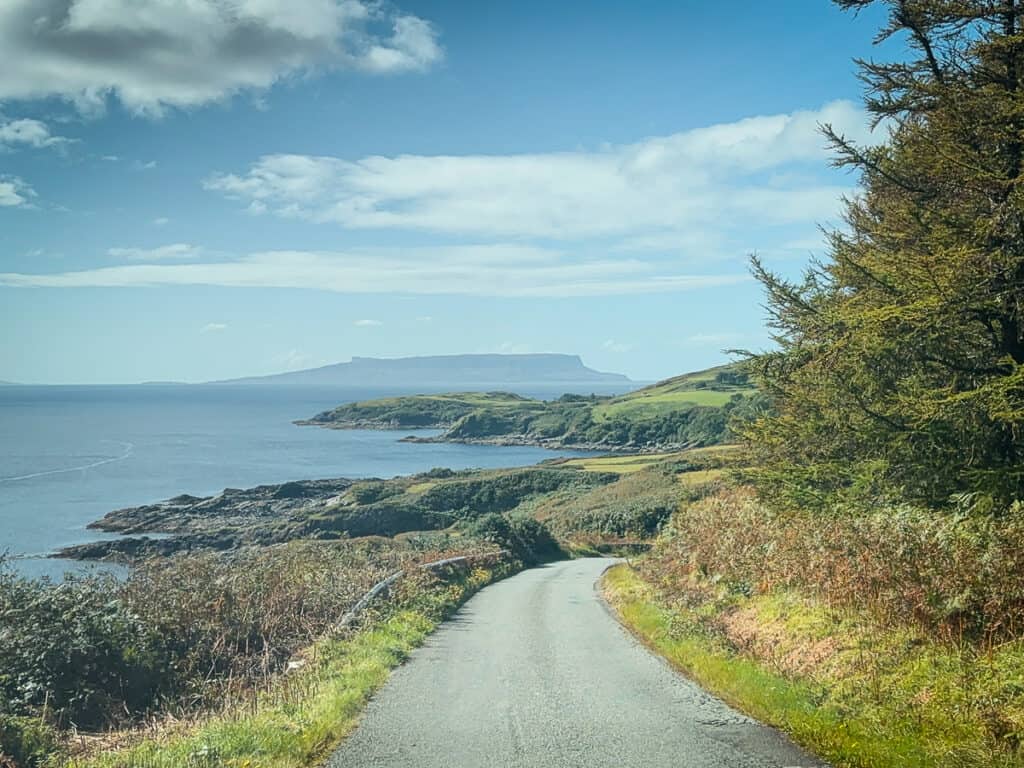
4. Practice reversing
Some people may not have to reverse much in their daily driving, but we do it a LOT.
If you pass a passing place by accident and you’re closest to it, you should reverse to allow the other car to pass.
Also, you should give way to vehicles coming uphill where you can, so you may need to reverse back uphill if you’ve passed a place.
You need to be able to reverse and curve back into spaces or go straight back and pull forward into the passing space. Practice if you’re not used to it!
We often see people panicking and making mistakes when reversing or point blank refusing to do so and going off the road, which ruins the road verges and causes issues with potholes or blown tyres.
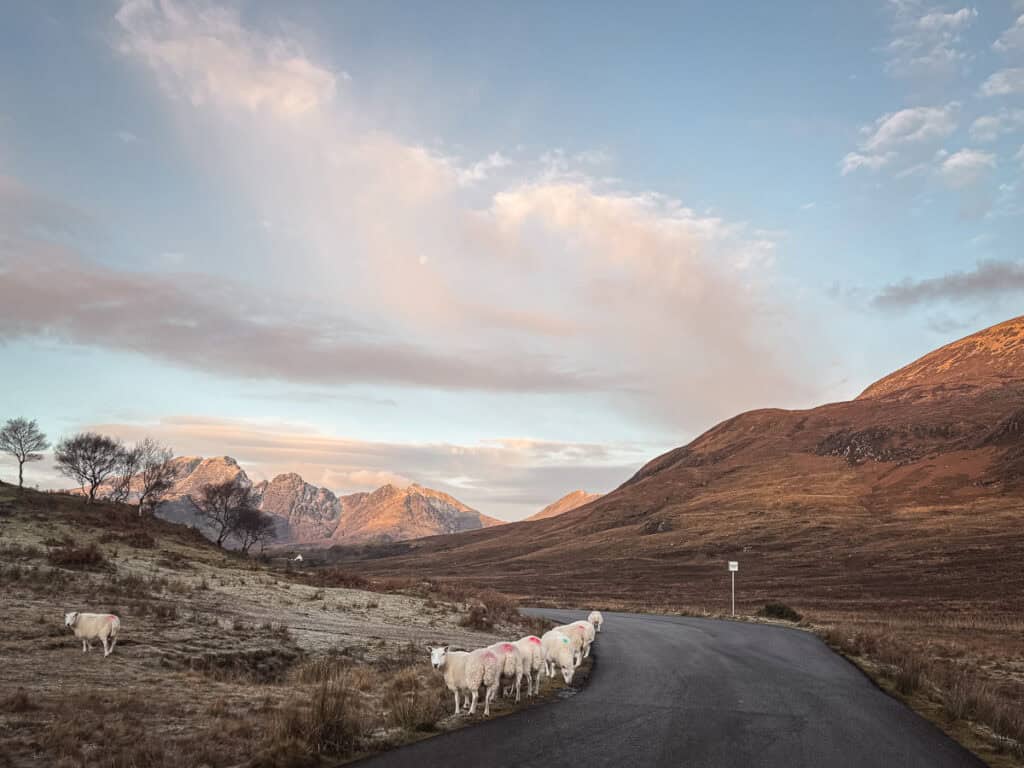
5. Watch out for potholes
Having a flat tyre is not fun. These can be caused by potholes, or also driving off the edge of the road onto the verge to pass cars rather than using passing places correctly. The edge is sharp and can pop the inner wall of the tyre, and this also causes more potholes on the sides of the road.
Unfortunately, when this happens, you can also block a single-track road so that traffic can’t flow in either direction. You don’t want to be that person!
6. NEVER park in a passing place. Ever.
Some passing places don’t have signs, but don’t be fooled! You’ll know by looking at the road and where the passing places are as they are generally pretty regular, or the corners on the road may be wider.
Parking in these places is dangerous for other road users.
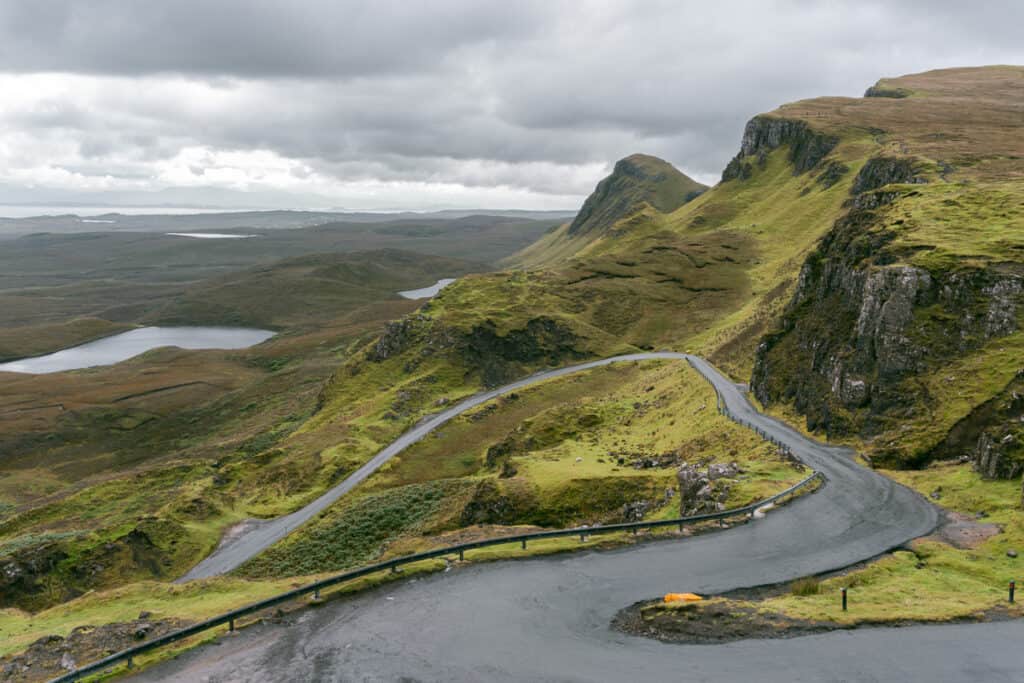
7. Use designated carparks
The car parks at the main attractions do fill up at the height of the season. Don’t use that as a reason to park on verges nearby. Be prepared to change plans, and try to visit at less popular times (I actually think the morning is the worst!).
If you’re visiting in the summer season, try to visit either very early (pre-9 am) or leave it until later in the day. The daylight hours are long, so take advantage of that!
8. Watch out for other road users, including livestock
Give cyclists and motorcyclists space, even if it means slowing down to wait until you can pass safely. The roads are not wide and very windy, so you may need to wait awhile for it to be safe.
Also, watch out for livestock on the roads. Especially lambs around spring!
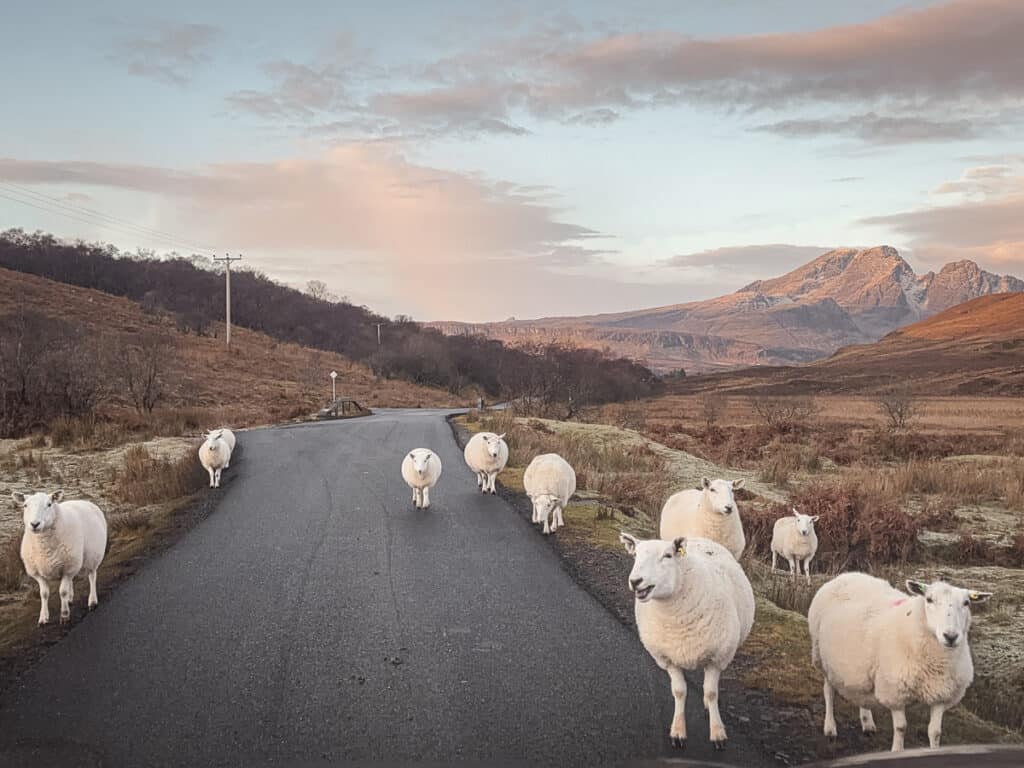
9. If you want to look at something, stop safely
Don’t just slow down and hold up traffic or drive erratically!
If you see something you want to stop at quickly look for somewhere safe to pull over or take note and plan to return and find somewhere on your way back/another time.
Don’t stop in passing places, for all the same reasons as not parking in them!
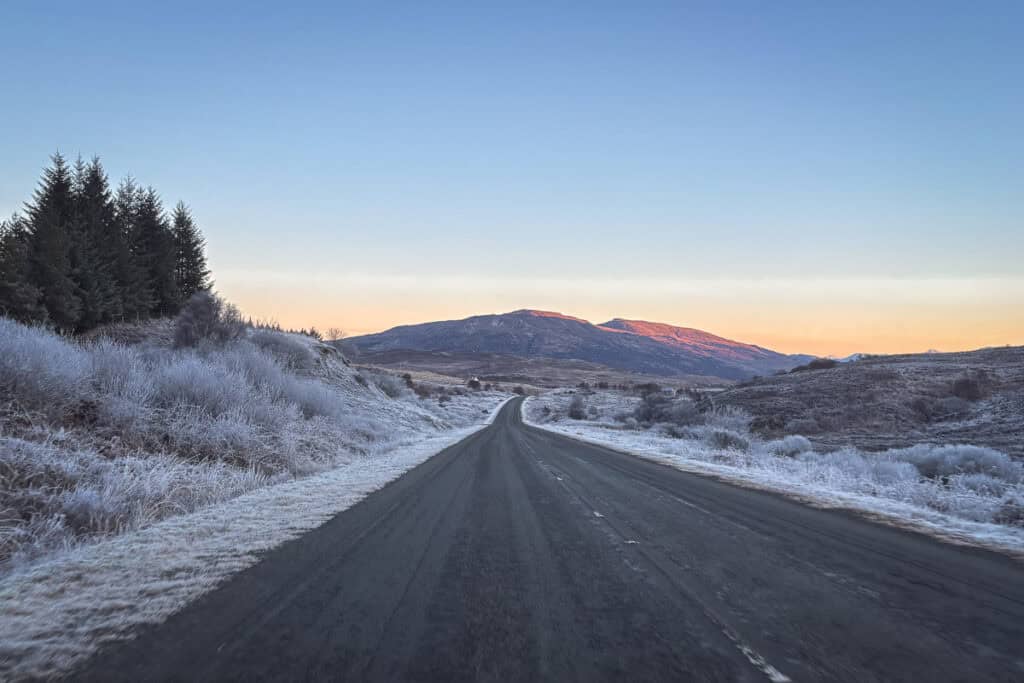
10. Find a way to centre your car in the lane
I can’t tell you how many drivers I follow who can’t seem to find the centre of the lane, bouncing between on/over the centre line and on/almost off the left-hand side of the road.
I’ve also watched two campervans smash their wing mirrors on a wide road because both were so close to the centre line!
If you’re not used to narrower roads or driving on the other side than what you do at home, you need to find something in the car you know lines you up in the middle of the road.
Sometimes, it’s something on a dash you keep in line with the side of the road or something about your own position in the driver’s seat (maybe just right of the centre) that keeps you on track, literally.
You can also use your side mirrors for this, taking a quick glance to check your position.
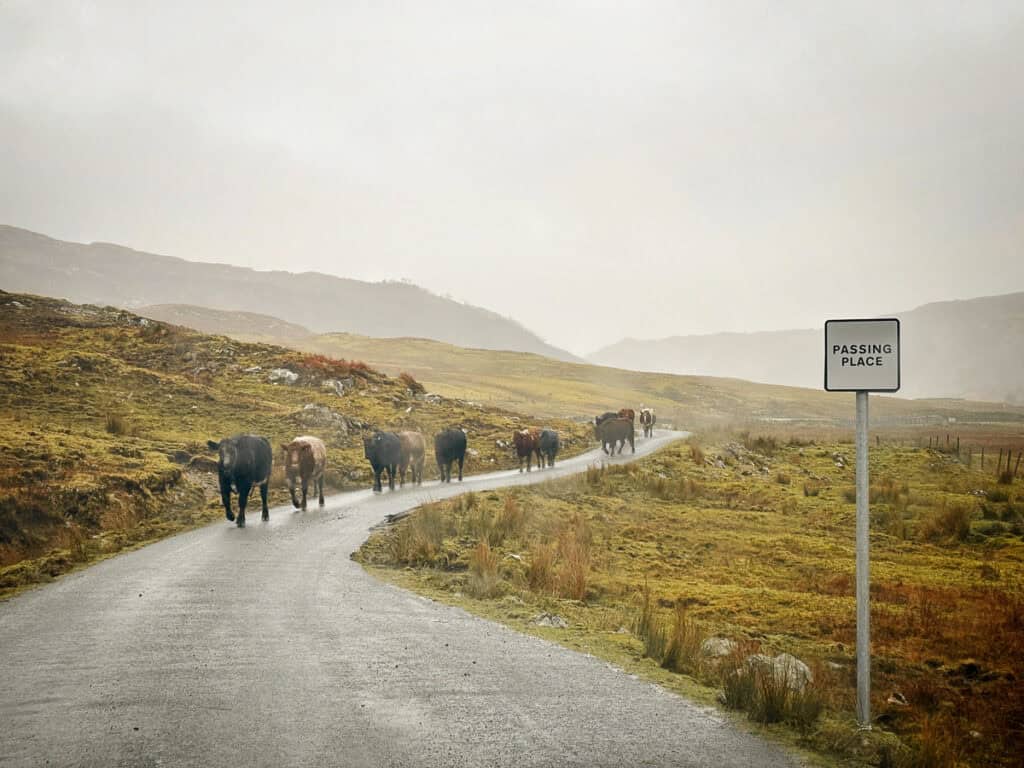
And that’s my top tips!
I’ve received many questions about driving, so I hope this helps. If you have any more questions about driving in Skye, you can join our Isle of Skye Travel Tips Facebook Group to ask!







